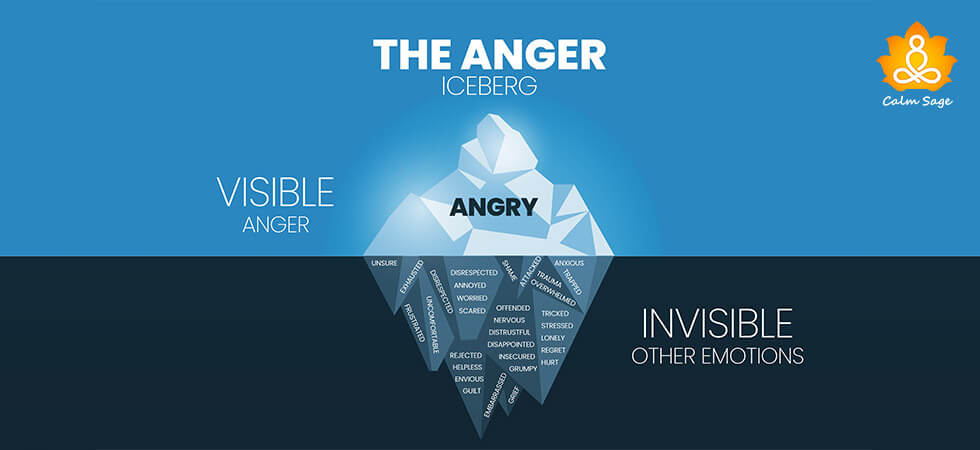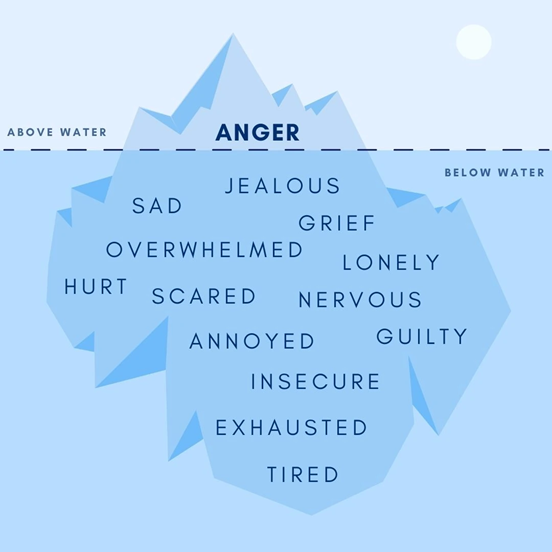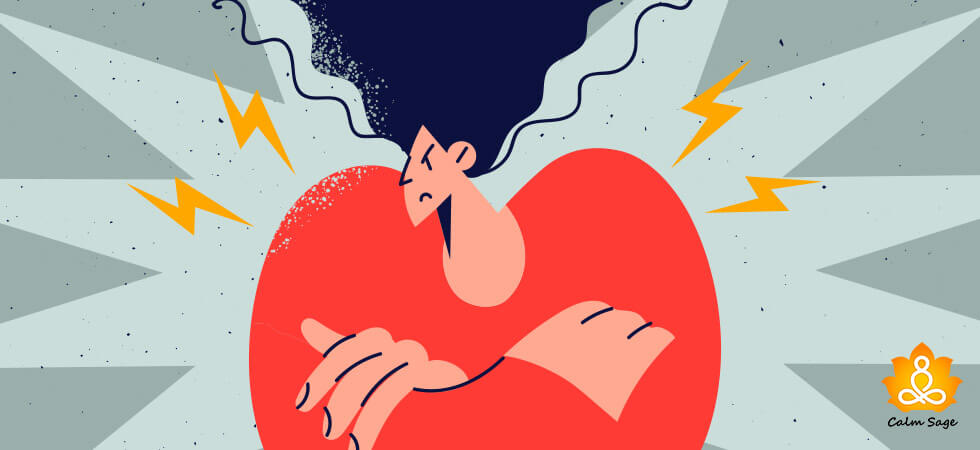The Anger Iceberg Theory: What Lies Beneath the Surface?

Anger has different faces; sometimes those faces are too easy to read whereas other times, they aren’t as easy. In a world where anger is acceptable if it manifests in fiery outbursts or through furrowed brows, we often ignore what’s under the surface. What we see and accept as anger, it’s just the tip of the emotional iceberg.
Now, I’m not saying that you’re icy, or your anger is, but there’s more to anger than what meets our eyes. Just like we need to peel through the layers of emotions and feelings to explore who is beneath the surface, we need to peel through the layers of anger to understand how it truly feels and manifests itself as.
Only when we can understand anger fully, can we transform our relationship with the emotion, enhance our self-awareness, and lead a meaningful pathway to destigmatize anger. So, strap in and get your gear on as we dive deep into the world of Anger Iceberg to explore what lies beneath the surface.
The Anger Iceberg Theory: What’s It All About?
We all know what that iceberg did to the infamous ship The Titanic, right? Now I want you to close your eyes and reimagine that scene, only that the iceberg is a metaphorical symbol for anger.

What you see, the tip of the iceberg, what’s above the water is the visible signs of anger, but what you don’t see is a huge chunk of ice hidden beneath the surface of the ocean. This massive chunk of ice is the hidden sign of anger that we are often too happy to ignore.
What the anger iceberg theory implies is that anger is a secondary emotion that only arises as a reaction to the primary emotions that are often hidden beneath the surface. Now, primary emotions are the ones we’re used to feeling; hurt, fear, frustration. These are the most vulnerable emotions but are rarely socially acceptable.
For example; When you feel hurt, you may respond negatively or aggressively to protect yourself; more like a defense mechanism.
The Tip: Visible Signs of Anger
Understanding the tip of the iceberg is easy. These are the visible signs of anger – clenched fists, raised voices, scowl on your face. These are the expressions people notice first and are the easiest to spot. Some of the common visible signs of anger, the tips of the iceberg, can include;
- Facial expressions through clenched teeth, furrowed eyebrows, etc.
- Raised voices through yelling, shouting, etc.
- Physical actions through muscle tension, clenched fists, rigid posture, etc.
- Redness in the face
- Verbal expressions through harsh language, insults, etc.
- Aggression through pointing, hitting, etc.
- Shallow breathing
- Fidgeting through pacing, expressions of agitation, etc.
Below the Surface: Hidden Signs of Anger
We are intimately aware of the visible signs of anger, but what about the ones that lurk beneath the surface? Now, this is here where things get interesting. Beneath the surface, you’ll find a bunch of emotions, feelings, and thoughts – from disappointment to hurt and from fear to sadness. Here, the emotions you feel are too vulnerable to express outwardly.
Many of us find expressing these emotions too vulnerable and weak, so to protect ourselves we often transfer our emotions into the visible signs of anger that society deems acceptable emotional responses. Moreover, decoding these emotions might take too much self-awareness than we’re comfortable with, so the best option is to stay at the tip of the iceberg rather than diving deep into the feelings.
Some of the common hidden signs of anger, the ones beneath the iceberg, can include;
- Feeling emotionally hurt
- Feeling anxious or experiencing anxiety
- Feeling frustrated
- Feeling grief or sadness
- Feeling guilt or ashamed
- Feeling disappointment
- Feeling doubt in oneself, or uncertainty about something
- Feeling or experiencing a lack of control over a situation
The Importance of the Anger Iceberg Theory
If you’ve been with me so far, then you must be wondering, “Can understanding this anger iceberg theory help?” Here’s the answer; When you recognize that anger – the one you’re used to – is just the tip of the iceberg, you can get to the root of your anger. It’ll be like solving a mystery once you know what to look for.
We often see anger as our primary emotion where it is the secondary one. More often than not, the anger we experience is the one masking the ones we are most vulnerable to – hurt, disappointment, fear, sadness. Knowing the root of these emotions, we can learn to choose healthier ways to cope with the anger we feel, communicate what we feel, and create a better relationship with the emotion.
Understanding the anger iceberg can help in many ways;
- It can help improve communication and make it easier for others to understand our perspective
- It helps create healthy discussions because you won’t just react with anger
- It helps you know yourself and your emotions better and can also lead to better management of your emotions
- It can help you become more empathetic to others’ feelings of anger
Destigmatize Anger Using the Anger Iceberg
Anger is a common human emotion, but it often gets a bad reputation. So, here are some tips to help you manage and destigmatize anger;
1. Hold open conversations:
Talk openly about anger with your friends and family. Share the iceberg of anger theory with them and help them understand that anger is not just about being mad but a lot more that often goes unnoticed, lying beneath the surface.
2. Try self-reflection:
When you feel that you’re getting angry, stop and explore what’s causing your anger. Look for the emotion beneath the surface. What emotions are you experiencing? Is it just frustration or are you disappointed in something? Check and then respond.
3. Seek support from a professional:
If anger is creating troubles in your life, relationships, and day-to-day functioning, then consider seeking support from a professional counselor or therapist. A counselor or therapist can help you understand the anger iceberg and help you manage the symptoms that you might not be seeing on the surface.
4. Foster a supportive environment:
You can also foster a supportive and encouraging environment where anger – and all its forms – are acceptable and no one is made to feel weak or bad about themselves for feeling whatever form or symptom of anger they are feeling. With validation and a better understanding of the anger iceberg, you can foster a nurturing environment where no one is scared to reach out for emotional help.
Wrapping Up…
Anger iceberg theory could be a game-changer in psychology when it comes to understanding and managing emotions as intense as anger. So, the next time you or someone you love gets angry, remember there’s a lot more than meets the eye. Not all emotions you see are the tips of the iceberg, there’s a lot that lurks beneath the yet unexplored surface.
So, don’t hesitate to dive beneath the surface! Who knows you might find a sea of emotions there.
Did this blog help you understand the anger iceberg theory and ways you can destigmatize anger for all? Let me know your thoughts and views about the article in the comments box below.
Take Care!





















Thank you, that was interesting and seems so obvious after you've illustrated it so well. I will try to remember this in future. 🙂